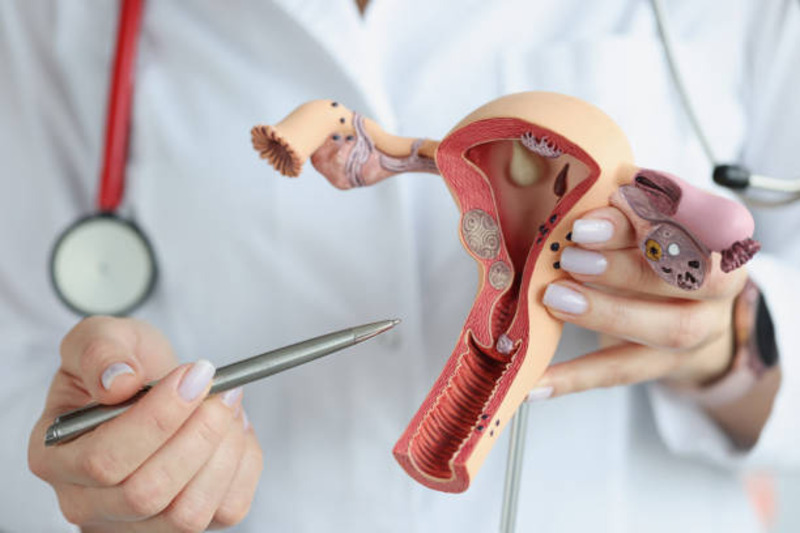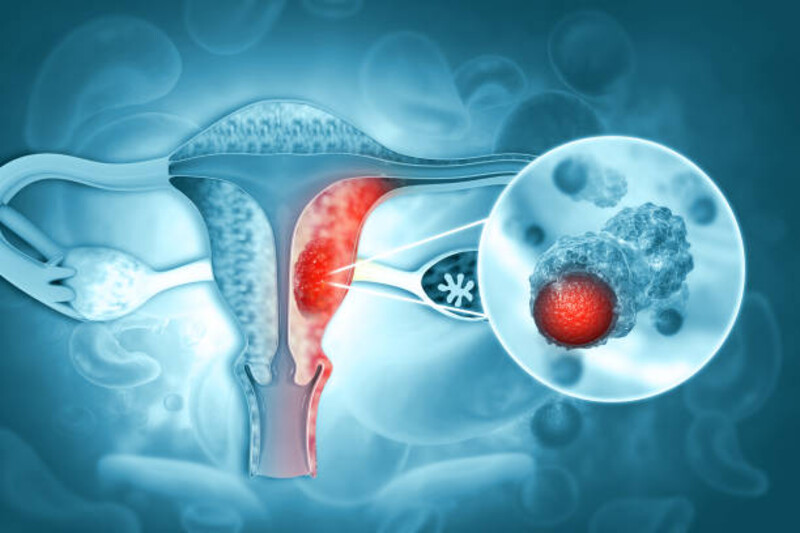What is cervical cancer?
Nov 11, 2023 By Madison Evans
Cervical cancer is one of the most common forms of cancer women face—and yet, it's also incredibly preventable if caught in time. And while we know that early detection is key when it comes to staying healthy, often times detecting cervical cancer can be easier said than done. That's why today we're taking a deep dive to help you uncover the signs and symptoms of this potentially life-threatening illness so that you can take appropriate steps towards protecting your health and well-being.
Overview of Cervical Cancer:
Cervical cancer is a form of cancer that occurs in the cervix, which is the lower portion of the uterus. It's important to know that cervical cancer typically develops slowly and can be prevented if detected early on—which is why regular screenings are so important for those who may be at risk. Common symptoms include abnormal vaginal bleeding, pain during intercourse, and pelvic pain or pressure. It's also important to keep in mind that these symptoms can be caused by other conditions, so it is always best to consult your doctor if you experience any of the above.
Common Signs:
When it comes to detecting cervical cancer, there are a few key signs that doctors look out for when conducting an exam. These include:
- Abnormal Vaginal Bleeding: This includes spotting or bleeding between periods, after intercourse, or after menopause.
- Unusual Discharge: If you notice a change in the color or odor of your vaginal discharge, this could be a sign of cervical cancer.
- Pelvic Pain and Pressure: Experiencing pain or pressure in your pelvic area can also be an indication of cervical cancer.
Diagnosis & Treatment:
If you experience any of the above symptoms or think you might be at risk for developing cervical cancer, it is best to consult your doctor as soon as possible. During a physical exam, your physician will likely perform a Pap test to examine any suspicious cells in the cervix. Other tests such as an MRI or CT Scan may also be conducted to get a clearer picture of your condition. Depending on the severity and stage of cancer, treatment options can range from radiation therapy, chemotherapy, or surgery to remove affected tissues.
Early Detection - What Is The Pap Test & Why It Is Important:

The Pap test is one of the most effective methods for detecting cervical cancer in its earliest stages. During a Pap test, your doctor will take samples from the cervix and then analyze them under a microscope to look for any abnormal cells or precancerous tissues. This can be done as part of a regular checkup, or you can request a specific exam if you have any concerns.
Risk Factors:
It's good to know what might put you at greater risk for cervical cancer—factors like HPV infection, smoking, long-term use of birth control pills, and age can all increase your chances. Additionally, if you or someone in your family has a history of cervical cancer, it is important to be extra vigilant with regular tests and exams.
Prevention & Protection:
The best way to protect yourself from developing cervical cancer is to maintain a healthy lifestyle and get screened regularly for any abnormal cells or signs. Additionally, practice safe sex and use condoms to protect yourself from HPV infections, which can increase your risk of cervical cancer.
Vaginal Discharge, Bleeding, and Pain - Are They Connected To Cervical Cancer:
Yes, all of these symptoms can be related to cervical cancer. It's important to keep in mind that they may also have other causes, so it is best to speak with your doctor about any abnormal changes you experience. They can help you determine the cause and provide appropriate treatment options if needed.
Living with Cervical Cancer: Coping and Support:
If you have been diagnosed with cervical cancer, it is important to remember that you are not alone. There are a number of organizations and support groups available to provide guidance and emotional support throughout your journey. Working with a therapist or counselor can also be beneficial for managing stress and anxiety. Additionally, speaking openly and honestly with family and friends about your diagnosis can also be a great help.
Abnormal Cells in the Cervix That Could Be Signs of Cervical Cancer:

Abnormal cells in the cervix—also known as dysplasia—can be an indication of cervical cancer. These can often appear during a Pap test and may include changes such as abnormal shapes, sizes, or patterns. At this stage, it is important to follow up with your doctor for further testing to determine if there are any precancerous cells and if treatment is needed.
Impact of HPV Vaccination on Cervical Cancer:
The Human Papillomavirus (HPV) vaccine has demonstrated a significant impact on decreasing the risk of cervical cancer. The vaccine protects against strains of HPV that often lead to high-risk precancerous changes in the cervix. It is recommended to be given at an early age, usually in adolescence, to provide protection before potential exposure to HPV.
Cervical Cancer Stages:
The staging of cervical cancer plays a crucial role in determining the best treatment plan. Early stages are typically localized to the cervix, while later stages may have spread to other parts of the body. In the earliest stage (Stage 0), abnormal cells have not invaded other tissue and may be treated through surgery or with medication. As the cancer progresses, more aggressive treatment options such as radiation therapy or chemotherapy may become necessary.
Conclusion:
Cervical cancer is a serious health concern and can be life-threatening if not detected early on. It is important to educate yourself about the signs, risk factors, and treatments available to help protect your health. Regular screenings are key for detection and prevention, so be sure to speak with your doctor about any concerns you may have. With the appropriate knowledge and care, you can take proactive steps to protect your health and well-being.
-
 Jan 24, 2024
Jan 24, 2024Everything You Need to Know About Anesthesia: A Detailed Exploration
Understand the intricacies of anesthesia with our comprehensive guide, covering its types, uses, how it works, and what to expect during recovery.
-
 Nov 19, 2023
Nov 19, 2023What is Achilles Tendinitis?
Explore the causes, signs, and treatments of Achilles tendinitis. Learn about prevention strategies to reduce your risk of this painful condition
-
 Jan 19, 2024
Jan 19, 2024What Is a Back Spasm?
Explore what triggers back spasms, learn about their symptoms, and discover the best treatment methods to live a healthier, active lifestyle.
-
 Aug 02, 2024
Aug 02, 2024Natural Ways to Reduce Spider Veins
Discover natural remedies to effectively get rid of spider veins and improve your skin's appearance.
